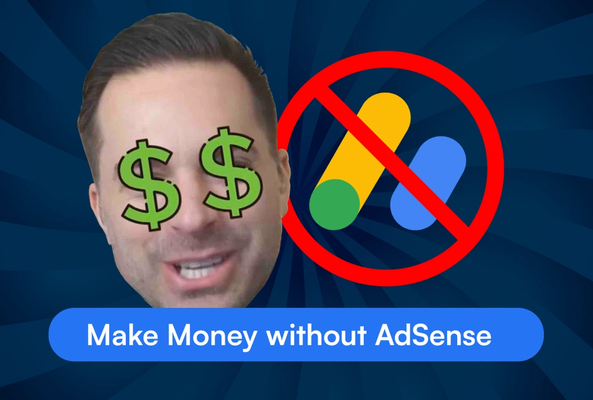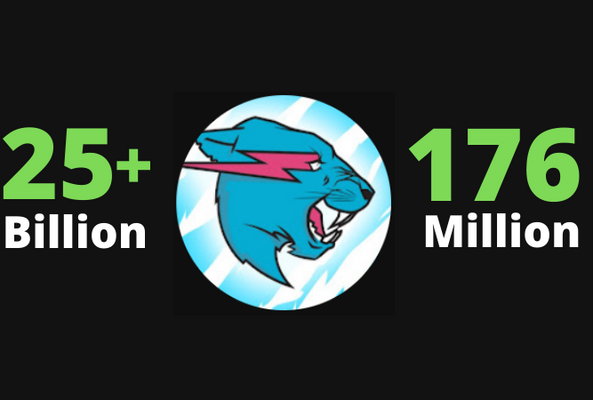In addition to being an avid movie and gaming enthusiast, Uttaran Samaddar is an experienced writer who has lent his creativity and unique perspective to various publications. He loves hearing and telling stories.
How Do Tariffs Impact YouTube Creators?
In 2025, President Donald Trump declared April 2 as "Liberation Day," unveiling sweeping tariffs that have since sent shockwaves through the global economy.
As YouTube creators, we often focus on algorithm changes, monetization policies, and content trends - but rarely do we consider how broader economic policies like tariffs might affect our livelihoods.
While tariffs are often discussed in the context of manufacturing and international trade, their ripple effects extend far beyond traditional industries. YouTube creators, who operate at the intersection of digital content and physical goods, are now grappling with the unforeseen consequences of these policy shifts.
What is a Tariff?
Before we can understand the impact on creators, let's clarify what a tariff actually is. Simply put, a tariff is a tax imposed on imported goods or services.
When the United States places a tariff on products coming in from other countries, it effectively increases the cost of those items once they reach American shores. Tariffs have been used throughout history as tools for economic and political leverage, protecting domestic industries, raising revenue, and applying pressure in international negotiations.
President Trump's recent tariff announcements represent a continuation of his economic philosophy from his previous term, emphasizing what he describes as "America First" trade policies. These new tariffs target a wide range of products, many of which are directly relevant to the tools and equipment that YouTube creators rely on daily.
Who Actually Pays the Tariff?
This is perhaps one of the most misunderstood aspects of tariff policy - and it's crucial for YouTube creators to understand. Despite common misconceptions, when the United States imposes tariffs on imported goods, the foreign government doesn't directly pay these taxes. Instead, the immediate cost falls on the American companies importing those products.
These businesses then face a choice: absorb the additional costs (reducing their profit margins) or pass them along to consumers through higher prices. In most cases, at least some portion of the tariff cost gets passed on to the end consumer - which includes YouTube creators purchasing equipment.
So, when asking "who pays the tariff?" the answer is complex but ultimately leads back to American businesses and consumers. This economic reality plays out in the creator economy just as it does elsewhere.
How are Tariffs Affecting the Creator Economy?
So far, we've theory crafted some ideas on how these policies could impact the lives of YouTube creators. In reality, tariffs are already influencing certain YouTube channels in the US.
In the video above, Dan points to specific channels which are facing a direct effect of the tariff. Let's discuss the problems they might face as a result:
Equipment Costs Skyrocket
YouTube creators rely heavily on equipment like cameras, microphones, lighting, and editing software—many of which are imported.With the new tariffs, the prices of these essential tools have surged. For instance, tariffs on electronics from China have increased landscaping equipment costs from $15k to $60k, making it significantly more expensive for creators to upgrade or replace their gear.
Merchandise Production Becomes Costlier
Many creators supplement their income by selling merchandise. However, the materials used—such as fabrics, inks, and packaging—are often imported. The increased tariffs have raised production costs, forcing creators to either absorb the expenses or pass them on to consumers, potentially reducing sales.
Content Creation in Niche Markets Suffers
Creators who focus on reviewing imported products, like toys, board games, or tech gadgets, face a unique dilemma. With tariffs making these products more expensive or harder to obtain, the content pipeline dries up. For example, board game reviewers are impacted by tariffs that have spiked from 54% to 145%, threatening the viability of their channels.
Read More: The 54 Best YouTube Niches, According to Viewers
Strategies for YouTube Creators in the Tariff Era
Despite these challenges, resourceful creators can adapt and even find opportunities in this changing landscape. Here are some practical strategies to consider:
1. Diversify Revenue Streams
Relying too heavily on any single income source - whether AdSense, sponsorships, or physical products - leaves creators vulnerable to tariff-related disruptions. Consider exploring:
- Digital products (courses, templates, presets) which aren't subject to tariffs
- Services like consulting or coaching
- Community-based revenue models like memberships
- Licensing content to platforms and brands
Read More: Beyond AdSense: Using Brand Promotion as Your YouTube Monetization Strategy
2. Rethink Equipment Purchasing
With equipment costs rising, creators should:
- Consider buying used equipment when appropriate
- Explore rental options for gears used occasionally
- Research domestic alternatives to imported equipment
- Plan purchases well in advance to account for potential supply chain delays
- Pool resources with other creators for expensive equipment
3. Lean Into the Creator Economy's Digital Nature
One advantage creators have is that our primary product, content, crosses borders digitally without being subject to tariffs. Emphasizing digital delivery over physical products can provide some insulation from tariff impacts.
4. Localize Production When Possible
For creators with merchandise lines, working with domestic manufacturers may become more cost competitive as tariffs increase the price of imported alternatives. This shift also creates content opportunities, as audiences often appreciate behind-the-scenes looks at local production.
5. Educate Your Audience
Transparency about how economic conditions is affecting your creator business can strengthen audience relationships. Consider creating content that explains these challenges, perhaps even using your experience to help viewers understand broader economic concepts like tariffs.
Historically, internet-based businesses have operated somewhat independently from traditional economic policy levers. The digital economy grew in an environment of relatively free trade and minimal regulation.
As the creator economy matures and becomes a more significant economic force (now estimated at over $100 billion globally), it increasingly faces the same regulatory and policy environments that traditional industries navigate.
So, let's be ready to navigate treacherous waters, and keep adapting to new changes.






